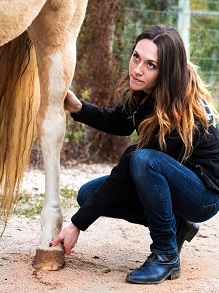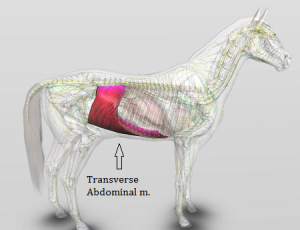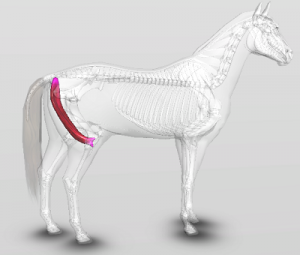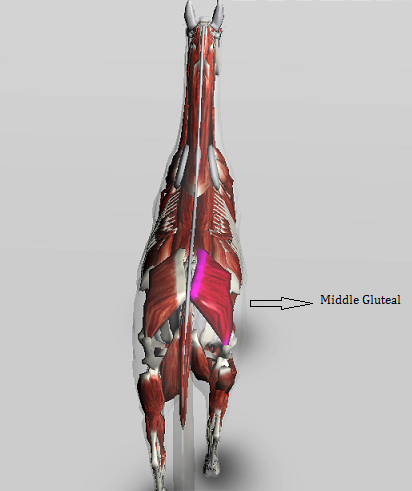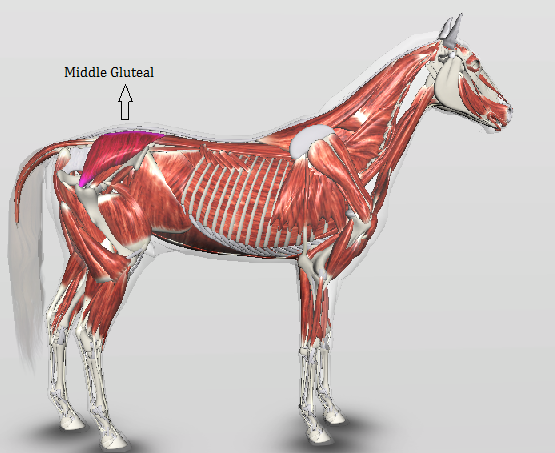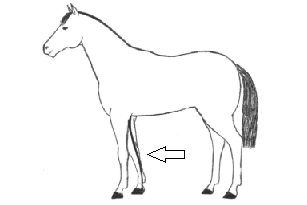Ready for a two in one doozy today?? I figured we may as well do the Semitendonous and the Biceps Femoris together, as they (along with the semimembranous) make up the horse’s hamstring group!! This powerhouse group of muscles is very important to the horse – follow along to see just how they affect our equines.
BICEPS FEMORIS

ORIGIN: Gluteal Fascia, Ishium
INSERTION: Lateral Femur, Cranial border of tibia, Calcaneal Tuberosity
ACTION: Extend and abduct limb
This muscle affects the stifle and the rest of the lower limb so if problems arise in these areas, chances are the biceps femoris is involved. This very powerful muscle is easily felt and massaged under the fascia. Remember that to ‘abduct’ means to bring away from the body – this muscle’s job is to extend and abduct the hindlimb.
SEMITENDONOUS

ORIGIN: Caudal sacrum, CD 1 & 2, ishitic tuberosity
INSERTION: Tibia, Calcaneal tuberosity (point of hock)
ACTION: Extend hip and hock, flexes stifle
The semitendonous is the muscle I mentioned last week, not to be confused with the inner Semimembranous muscle. Part of where it originates from, the ishitic tuberosity, is what humans sit on when we ride.
A common injury with this muscle is Fibrotic Myopathy (or Myositis Ossificans). This is when a muscle is torn, commonly from trauma, and ossification occurs when the tissue heals. In acute cases, the injury site is warm and painful when palpated. Chronic cases show a gait abnormality that is no longer painful, with the affected leg demonstrating a hoof-slapping motion. This is usually most evident at a walk. Here is a youtube video to show you.
The hamstring group (biceps femoris, semitendonous, semimembranous) are also linked/affected by the horse’s colon. Coming from a chinese medicine viewpoint, if your horse is experiencing issues with digestion or any/all of the above muscles, chances are they are linked and treatment options should reflect this.
